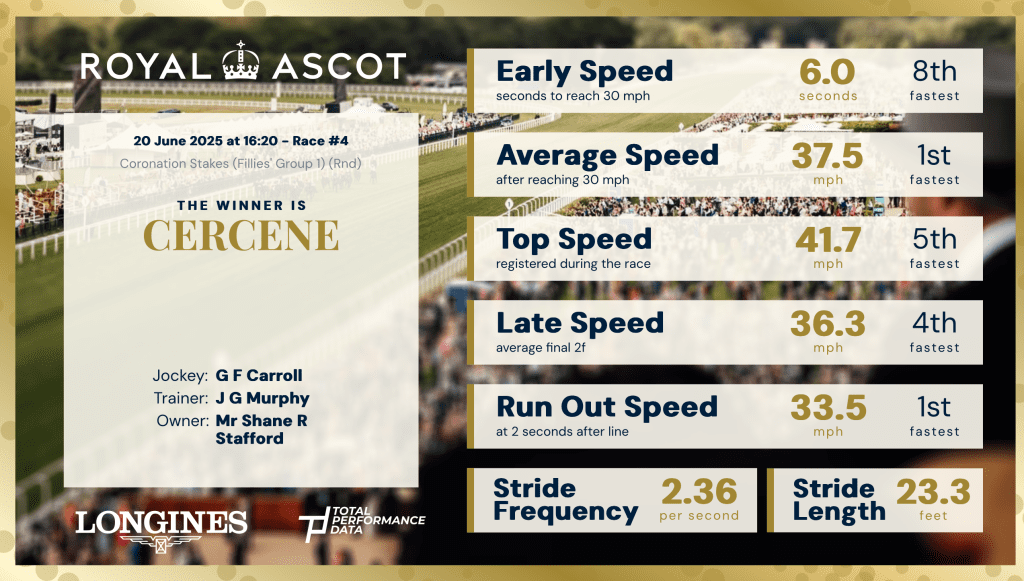

Let’s start where we should with the analysis of this race and discuss the winner. Cercene was a first winner at Royal Ascot for Joseph Murphy and she showed a superb attitude to get her head in front in the final furlong. Recording a top speed of 41.70 mph, she was the fastest horse in the first 6 on the speedometer and having run the fastest final furlong in 12.51s she was the clear best in the home straight. Although initially slow to leave the stalls, she recovered to reach 30 mph in 6s as Gary Carroll urged her to get on to the tails of the leaders. Falakeyah, Duty First and Chantilly Lace all took less than 5.2s to reach 30 mph and their early battle for the lead ensured that this became a test of stamina. Although we need to acknowledge that this race was run 3-days later, Cercene produced a faster winning time (1:38.35) than Field of Gold in the St James Palace Stakes on Tuesday. At 33.51 mph, she galloped through the line with the best run-out speed in the field. The temptation would be to think that the runner-up has thrown the race away and I will come to that in a moment, but if we imagine that Zarigana was not in the race, Cercene has finished faster than the other 9-runners with a run out speed that’s 0.85 mph quicker than anything else. A genuine Group 1 performance from a filly with a superb attitude, there is no reason to think that this will be the last top level race that Cercene is competitive in.
This race was billed as a match between Falakeyah and Zarigana. The former was simply too keen as she was pestered for the lead in the early stages, running opening furlongs of 13.97, 11.28 and 11.99s. For some context to those times, Falakeyah was 1.23s faster than the more patiently ridden January (3rd) over the opening 3-furlongs. She couldn’t sustain that effort and was beaten with a quarter of a mile to run. There’s no such excuse for Zarigana, who had the ideal position and who was faster than the winner in furlongs 5, 6 and 7. She clearly pulled herself up once hitting the front, changing her lead leg and reducing both her average stride length (6.94m) and her average stride frequency (2.3 per second) in the final furlong. Francis-Henri Graffard was very gracious in his post-race interview and given that Zarigana had a slower top speed than the winner, it’s not an entirely full gone conclusion that Cercene was beaten, but Zarigana was beaten at odds of 1.13 in running and that’s a fair reflection of her chance of winning the race with a furlong to run. She’s beaten the rest and remains a hugely talented filly, but the thought that “something always happens with Zarigana” is beginning to change from being a coincidence to a pattern.